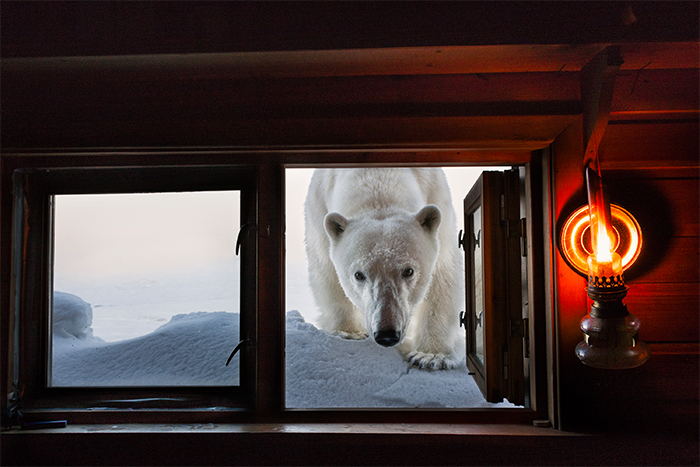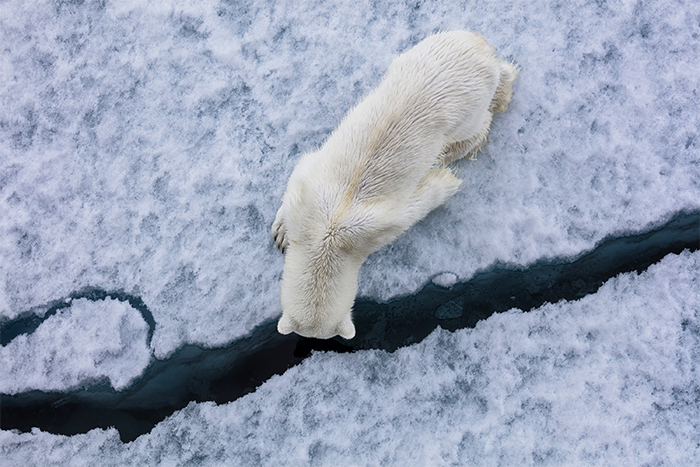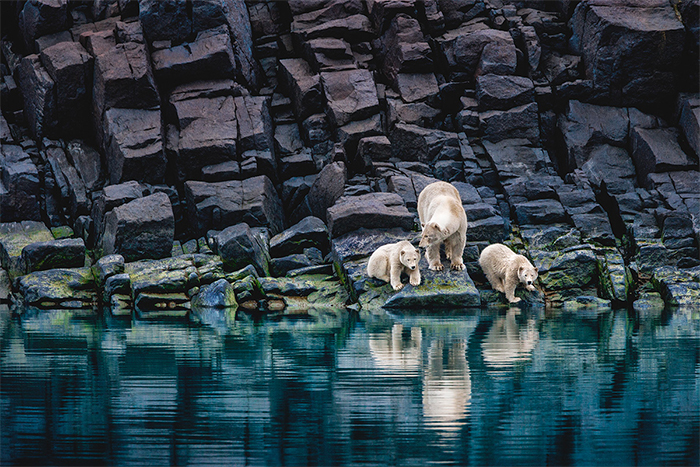Guest Post by Paul Nicklen | On Polar Bears and Making Space for Wildlife

This is a guest post by WWSG exclusive speaker, Paul Nicklen.
“When one tugs at a single thing in nature, he finds it attached to the rest of the world.”― John MuirDear friend, If you are anything like me, you find true peace in connecting with nature– especially with wildlife and our animal kin. We are incredibly fortunate to share our planet with a vast array of fauna. However, as we continue to clear-cut forests, dredge the earth for oil, and encroach further into once-pristine habitats, our relationship with our wild cousins has become increasingly strained. As someone who grew up in a small Inuit community in the Arctic, learning to make space for the wild beings of the world has always been a part of my life. Over the course of my photography career, I have strived to instill a sense of kinship and empathy with animals so we may become better stewards of this planet. Of all my images, Face to Face is perhaps the one that embodies this the most.
On an expedition to Svalbard in 2008, we had hunkered down in our tiny cabin to weather a blizzard when I suddenly noticed a face in the window. A large female polar bear peered curiously through the glass, silhouetted against the storm. At first, I was surprised and felt the upwelling of childlike giddiness I get whenever I see a polar bear. My joy was quickly dampened, however, when I realized our snowmobiles were parked nearby. A little-known fact about polar bears is they love to chew on nice, expensive snowmobile seats. In order to distract her, I did what any perfectly rational person would do– I opened the window.
With the last barrier between us gone, I now had a polar bear calmly standing on the verge of stepping into our shelter. Then it dawned on me; this was my chance to share a new perspective surrounding our planet’s top predators as they contend with an uncertain future. As sea ice melts and access to seals starts to dwindle, polar bears must turn to new food sources. Unfortunately, in their search for an alternative, they sometimes find their way into encampments and even remote towns in the far North. In most cases, these bears are shot and killed.I wanted to show that surprise interactions with wildlife like this do not have to end in tragedy. Scrambling to improvise and pull the image together in the dim light, I lit the oil lamp by the window, which likely had not been lit since Willem Barentz came through the area in 1596. The soft orange glow added mood to the image, but did little to light the face of our curious visitor. Finally, I reached for my Apple laptop, the only other light source I had on hand. I opened it up, set it to a blank white screen, and held it in one hand inches from her face. Miraculously, the image turned out well and now lives on as an art print and testimony that coexistence with nature is not only possible, but a necessary part of healing our planet. With biodiversity plummeting across the world and climate change undermining entire ecosystems, our relationship with nature has reached a critical juncture. If there was ever a time to rethink how we engage with animals and learn to make room for the wild things in this world, it has to be now. Even an apex predator like the polar bear, the largest land-dwelling carnivore on the planet, serves a vital role within its habitat and deserves just as much compassion as any animal. We do not have to hate them or fear them. We can choose instead to respect what they are, give them the space to be wild, and learn to navigate a peaceful path forward for both animals and people. Thank you for sharing this journey with me and giving our wild brothers and sisters a voice. With gratitude, Paul Nicklen


